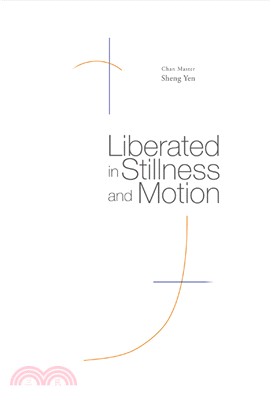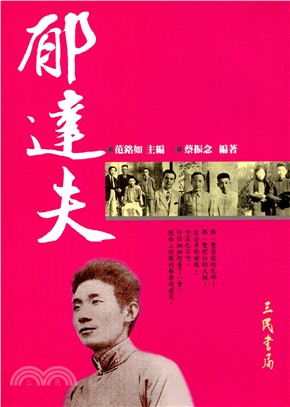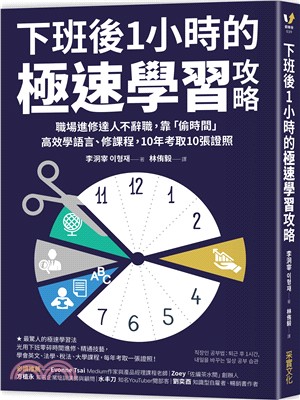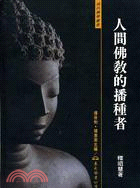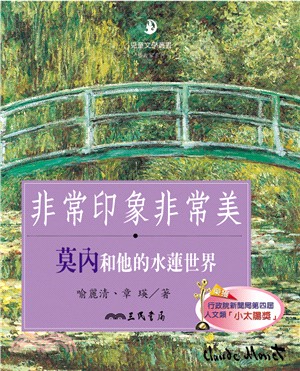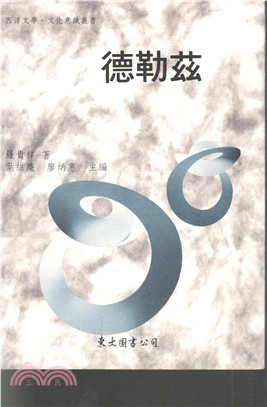Liberated in Stillness and Motion
- 系列名:法鼓全集英譯禪修系列
- ISBN13:9789575987084
- 替代書名:動靜皆自在(英文版)
- 出版社:法鼓文化
- 作者:聖嚴法師
- 裝訂/頁數:平裝/180頁
- 規格:23cm*15.5cm*1.3cm (高/寬/厚)
- 版次:1
- 出版日:2016/05/01
再享89折,單本省下36元
商品簡介
Live a life of ease and freedom, on the basis of peace and solidity,
with the principle of being less agitated and affected.
Many masters in the history of Chinese Chan Buddhism emphasized practice as daily living. Whether monastic or lay, a follower uses the concepts and methods of Chan in daily life. By doing so, one experiences calmness and ease while being spontaneous and lively amidst mundane reality. Chan is not a religion, not a philosophy, and surely not mysterious or weird sorcery. It is the wisdom of living, the cultivation of body and mind, and a principle and guideline for spiritual development. It is also the best method for influencing and purifying the environment.
——Master Sheng Yen
作者簡介
Master Sheng Yen (1930-2009)
Master Sheng Yen was born in 1930 and became a monk in 1943. He conducted a six-year solitary retreat, after which he went to Japan for further study and obtained a doctorate in Buddhist literature at Rissho University. In 1975, he began sharing the Dharma in the US, and in 1989, founded the Dharma Drum Mountain organization. In 2005, he established the Dharma Drum Lineage of Chan Buddhism, as an effort to reinvent Chinese Buddhism.
He authored more than 100 publications in Chinese, English, and Japanese, and received the Sun Yat-sen Art and Literary Award, the Sun Yat-sen Academic Award, and the Presidential Cultural Award, among other honorary awards.
He proposed the vision of “uplifting the character of humanity and building a pure land on earth,” founded the Chung-Hwa Institute of Buddhist Studies, Dharma Drum Institute of Liberal Arts, and Dharma Drum Sangha University. Experienced in Chan using correct approaches, he guided practice in both the West and East. Popularizing the Dharma in modern language, the Master initiated movements including Protecting the Spiritual Environment, Four Kinds of Environmentalism, the Fivefold Spiritual Renaissance Campaign, and the Six Ethics of the Mind. He shared the Dharma globally with a broadminded perspective, winning him worldwide recognition.
聖嚴法師(1930〜2009年)
聖嚴法師1930年生於江蘇南通,1943年於狼山出家,後因戰亂投身軍旅,十年後再次披剃出家。曾於高雄美濃閉關六年,隨後留學日本,獲立正大學文學博士學位。1975年應邀赴美弘法。1989年創建法鼓山,並於2005年開創繼起漢傳禪佛教的「中華禪法鼓宗」。
聖嚴法師是一位思想家、作家暨國際知名禪師,曾獲臺灣《天下》雜誌遴選為「四百年來臺灣最具影響力的五十位人士」之一。著作豐富,中、英、日文著作達百餘種,先後獲頒中山文藝獎、中山學術獎、總統文化獎及社會各界的諸多獎項。
聖嚴法師提出「提昇人的品質,建設人間淨土」的理念,主張以大學院、大普化、大關懷三大教育推動全面教育,相繼創辦中華佛學研究所、法鼓文理學院、僧伽大學等院校,也以豐富的禪修經驗、正信的佛法觀念和方法指導東、西方人士修行。
法師著重以現代人的語言和觀點普傳佛法,陸續提出「心靈環保」、「四種環保」、「心五四運動」、「心六倫」等社會運動,並積極推展國際弘化工作,參與國際性會談,促進宗教交流,提倡建立全球性倫理,致力世界和平。其寬闊胸襟與國際化視野,深獲海內外肯定。
目次
Contents
Preface vii
Enlightenment and the Practice of Chan 1
Chan Studies and the Correct Buddhist Teachings 15
The Methods of Practice of Chan and Pure Land 23
Chan and Mental Health 33
Chan and Modern Life 43
Chan and Spiritual Environmentalism 53
Chan Practice and the Environmental Life 65
Religion, Chan, Buddhadharma and “Evil Demons” 69
No-Self and True-Self 71
No Rise of Wandering Thoughts, No Rejection of Phenomena 83
Wandering Thoughts, Scattered Thoughts, and Mindfulness 87
Awakening to the Mind and Seeing the Nature 93
Mind in Buddhism and Chan 101
Ordinary Mind 111
The Mind is Like the Sun Shining in Empty Space 119
Zero Faults 131
From Existence to Emptiness and from Emptiness to Existence 137
The Power and Function of Group Practice 143
The Attitude for Practicing Chan 147
Chan for Ordinary People 155
The Principle of Chan Meditation Practice 163
書摘/試閱
The practice of Chan is most humane.
The concept of Chan is most humanistic.
The methods of Chan are most humanized.
The style of Chan is most humanitarian.
Many masters in the history of Chinese Chan Buddhism emphasized practice as daily living. Whether monastic or lay, a follower uses the concepts and methods of Chan in daily life. By doing so, one experiences calmness and ease while being spontaneous and lively amidst mundane reality. Chan is not a religion, not a philosophy, and surely not mysterious or weird sorcery. It is the wisdom of living, the cultivation of body and mind, and a principle and guideline for spiritual development. It is also the best method for influencing and purifying the environment.
Correct Chan does not use miracles or the summoning of spirits as its appeal, nor does it emphasize other-worldly phenomena. Urgency and eagerness to obtain benefits is not its purpose. Chan takes simple normal living as its basis, lessening afflictions as its purpose, being relaxed and at ease. One does not regret the past; rather, one actively prepares for the future, moving steadily ahead while being fully in the present. These are the benefits of practicing Chan.
Over the past twenty years I have written about Chan, talked about it, and taught it so that people may learn and use it. Many disciples, students, readers, and listeners have benefited, but I have benefited the most. Though I grow old, I still enjoy doing this untiringly. I am ever certain that I have gained more, yet given less. Therefore, I am grateful to the Three Jewels and grateful to my masters, teachers, friends, and people for their support. More and more, I feel that what I have learned and what I know is limited while the sea of Buddhadharma is vast and endless. So I dare not be arrogant and proud. Although I introduce Chan in contemporary language and words, my perspective does not deviate from the teachings of the Buddha and the lineage masters. I avoid the "wild-fox Chan" of some who talk of going beyond the Buddha and the lineage masters, who say outrageous things, scolding as if they were ancient buddhas from the past. This causes great harm to sentient beings.
This book was compiled and designed by the editing team of Dharma Drum Publishing Corp. in Taiwan. It consists of articles related to the teaching and practice of Chan. First published in Humanity and Dharma Drum from 1993 to 1998, most of these articles have been revised. Due to time constraints, some were originally published as unedited transcripts, their original structure was loose, the words unpolished, and the meanings sometimes unclear. As talks, they may have been clear to live audiences, but in written form they may have been less clear. To remedy that, I have refined them for publishing in print.
Regarding my books on Chan, [as of this writing] I have published nine books in English. Some books have been translated into over ten European and Asian languages and are distributed worldwide. Of the ones in English, two were translated into Chinese. Another ten books on Chan have been published in Chinese and one was translated into English. This is not because I teach Chan one way in the East and another way in the West; it is because I had no time to work on cross-translation.
As of now, I have published over 60 or more various works on Chan. For reasons unknown to me, the books are popular and sell well and steadily. The books in English were originally published by our own Dharma Drum Publications in New York. Since 1998, established publishers in the USA such as Shambhala Publications and Doubleday Publishing, and others, have published my books on Chan.
Master Sheng Yen
Chan Meditation Center in New York, NY
November 23, 1998
Chan Studies and the Correct Buddhist Teachings
Given at the Dept. of Management, University of South Florida, April 30, 1995
Chan is Buddhism
The establishment of Buddhism stems from meditation practice (Skt. dhyana; Chn. chan), and there are two sayings that convey this idea: “From meditation comes doctrine” (Chn. “Congchan chujiao”), and “Using doctrine to awaken to the mind” (Chn. “Jiejiao wuzong”).
1. From meditation comes doctrine.
There is a common misunderstanding that the practice of meditation is specifically designed for the Chan School and only the Chan School practices Chan meditation. Actually, early Buddhism and Buddhist theory were established by Shakyamuni Buddha through his practice of meditative concentration, or samadhi. Even generations later, various masters were still deriving their new doctrines from the same solid foundation and experience of meditation practice. They established the theories and methods of various schools and sects according to their genuine practice and enlightenment experiences. Therefore, Chan is Buddhism and Chan meditation is not a method exclusive to the Chan School.
2. Use doctrine to awaken to the mind.
Using doctrine to awaken to the mind means using the methods and concepts from the teachings to guide one’s practice and to attain enlightenment. Without the concepts and methods there would be no focal point where one could exert one’s effort in the practice. Before reaching buddhahood the Buddha learned and experienced many practice methods and eventually attained enlightenment. Afterwards he began to teach. The Buddha once said that during a time when there is Buddhadharma, one must follow the Buddhist teachings and the methods to attain enlightenment. If someone suggests that he can become enlightened without Buddhadharma yet claims to be Buddhist—even boasts of being an enlightened Buddha—neither is he a true Buddhist nor is his belief genuine Buddhism. Such people can only be practitioners of outer-path Buddhism. A genuine Buddhist would surely use the Buddhist scriptures, concepts, and methods as the basis for practice.
The Fundamental Principle of Buddhism
Some religions proclaim they are Buddhist but in fact stray from Buddhist principles and beliefs while developing concepts that are not Buddhist. Meanwhile, if one only talks about Buddhadharma, studies, and quotes from the scriptures, but lacks the actual foundation and experience of meditation practice, then they are merely counting other people’s treasures. To determine if one is in accordance with Buddhadharma, one should apply the teaching of the Three Dharma Seals which states:
1. All mental activities (volitions) are impermanent:
The contents of the mind are constantly changing.
2. All dharmas are without self:
All physiological, physical, natural, and social phenomena as well as mental phenomena, lack an unchanging, permanent self.
3. Nirvana is perfect quiescence:
The transcendental state of being unmoving and empty; the fundamental basis of the universe and human life. “Empty” refers to the constant change of all phenomena due to the workings of myriad causes and conditions. Amidst constant change, only emptiness is forever unchanging. Therefore, nirvana is neither arising nor ceasing, neither pure nor impure, neither accumulating nor diminishing, and it is still and unmoving.
The fundamentals of Buddhadharma should accord with the principle of the Three Dharma Seals, and the practice of Buddhadharma should follow the guidelines of the three studies without outflows, namely, precepts, concentration, and wisdom.
The precepts are living guidelines and their function is to protect the body and mind from defilement. If one keeps the pure precepts, one will not easily give in to demonic obstructions. Through upholding the precepts one reaches meditative concentration and peacefulness of the mind, which then gives rise to wisdom. The basis of Chan is mind, and its distinct transmission is outside of the teachings and beyond reliance on words and teachings. Therefore, the real Chan cannot be described by any language or words. However, we still need words to guide the practice of Chan, like using a finger to point at the moon; although the finger is not the moon, it helps us see the moon by pointing at it. Only those whose minds are illuminated and who have seen the nature have no need for words.
The Orthodox Great Religion
An orthodox religion should meet three requirements:
1. It has long-lasting historical background.
Since the beginning of history, many religions have risen and fallen. Some were limited to certain areas and periods of time, and some came and went and failed to last very long. Some religions rose with the founder and perished once the founder passed away. A religion that cannot withstand the tests of time and space cannot be considered a great religion as such.
2. The teachings are enduring yet fresh.
The methods and teachings should endure the passage of time, yet always be able to refresh themselves with new concepts and methods while not deviating from their basic principles.
3. It uses morals that adapt to time and place.
At any time or location, a great religion should accord with the moral standards of the time and place. A healthy spirit for religion includes the qualities of being humanistic, humane, and rational in the secular realm, and transcendental in the religious realm. The quality of transcendence includes forgiveness, tolerance and non-attachment.
What is the Correct Buddhist Teaching?
1. It is non-secular while being humanistic.
It emphasizes sincere mutual care between people, but is not based on emotions nor involved in distinctions of right or wrong, gratitude and resentment, or influenced by personal feelings.
2. It is not about ghosts and deities but it has teachings about human and heavenly realms.
It recognizes the existence of ghosts and deities but does not rely on them. It acknowledges the possibility of rebirth in the heavenly realms, but does not see heavenly rebirth as the final refuge. Whether one is in the human or heavenly realms, one must comply with the appropriate moral standards.
3. It is not escapist but transcends the world.
One contributes to and cares for society endlessly, but would not expect any reward for one’s efforts.
4. It is not attached to the world but is engaged in it.
In order to help those in need, one should be involved in every aspect of society but unattached to it.
Chan and Mental Health
Given at the Taipei Theater, New York, November 6, 1995
Material Comforts are Unreliable
Material comforts cannot bring lasting peace and fulfillment to spirit and mind, yet people still pursue them for security, to have something to rely on. The pursuit is all about clothing, food, shelter, transportation, intimate feelings between man and woman, and so on. Yet the more people pursue these comforts the more troubled and perplexed they are. It’s like drinking sea water to quench your thirst; the more you drink the thirstier you get. Most people do not drink sea water but it is true that people feel insecure and unsatisfied in life.
One of my followers has two estates, and before he bought them he was happy; now he is very worried, since the real estate market is in decline. He wants to sell the estates at a loss but is loath to part with them; yet if he does not sell, the burden of the loans is too heavy. Therefore, he worries about the gains and losses, and his mind is very unsettled, with no sense of security. As a result, for him, pursuing material comforts is definitely unreliable and not the ultimate goal of life.
The Difficulty of Spiritual Pursuit
If instead, we emphasized the spiritual aspect of life, then we will feel like we have something to rely on and a focus in life. However, it is not always easy to find safety and security in the spiritual realm. For example, some people are very devoted to their religion, and some firmly believe in their philosophy of life. With this kind of spiritual reliance and trust, they feel secure and settled in life and stay mentally and physically healthy. Someone who is accomplished in their career or artistic field should feel secure and fulfilled. However, if the world does not recognize their accomplishments, will they still feel that their life is very meaningful? It’s doubtful. I know an artist who is very talented and hard-working but his paintings are poorly received. I say to him, “You paint quite well. Perhaps right now people don’t know how to appreciate your work; do not feel discouraged.”
He says in dismay, “I don’t know if my artistic work will ever be valued by others in the future.”
I said: “Don’t worry, after you pass away, perhaps someone will appreciate your paintings. It isn’t bad to be like Van Gogh.
He said: “It would be a pity to be like Van Gogh. He was unable to make a fortune himself, while people in later generations made a fortune from his art.”
Apparently this artist does not affirm his own efforts, so when he encounters difficulties, he has doubts about his life.
The Method of Chan is the Method of Settling the Mind
Chan provides the methods and concepts to help people settle their minds. In his youth Shakyamuni Buddha witnessed the suffering of birth, aging, sickness, and death, but did not know how to gain liberation from these things. So, leaving home to practice, he became enlightened to the way of settling the mind. Then, he taught the Dharma for 49 years, all with the intent to help human beings settle their minds. He told us that though the body requires material aid and medical care, the mind needs the salvation of Buddhadharma. Physical health is important, but if the mind is unhealthy, even if one appears physically healthy, one is still a sick person. Many people think themselves physically healthy who wouldn’t even know if they were sick; if they don’t feel discomfort they think they are healthy. But there are few people who think that their minds are completely healthy, free of problems, and normal.
To be physically healthy exercise is required, but for mental health it is the opposite; one requires sufficient stillness in the mind. It is better for the body to exercise every day, but for the mind it is better to be still sometimes. People have the habit of exercising every day, but very few have the habit of stilling the mind every day for a period of time. In Chan, mental therapy consists in practicing methods for settling the mind and includes two aspects: relaxing the body and mind, and letting go of all worries. It would be useless to know about the methods and not practice them, so practice is necessary. However, this kind of relaxing and letting go is not permanent because ordinary people cannot forever let go of their worries in one attempt. They may be able to do it for a few minutes, but no longer than that. But even this temporary letting go is so that one will ultimately let go for good. In other words, letting go of one’s worries permanently usually starts with letting them go temporarily.
In Chan there is the gradual approach to enlightenment and there is also the sudden approach. “Gradual” means practicing the methods to make the mind healthier, and “sudden” means not using any specific method, and putting down vexations all at once to achieve sudden enlightenment. Therefore, many people like sudden enlightenment. Sudden enlightenment without practice is possible but very rare, and afterwards people usually still need to practice in everyday life. This means finding periods of time in a day, or when there are problems in the mind, to help oneself by relaxing the body and the mind.
Stories about Settling the Mind in Chan
Sudden enlightenment is not easily achieved but the idea is very appealing. Once a person is enlightened, he or she will be mentally healthy. There are many famous stories about sudden enlightenment in the Chan School. One time a monk asked for guidance from the second patriarch of the Caodong Sect, Master Caoshan Benji (840-901). The monk said, “I am full of illness; will the master please cure me?”
Caoshan said: “I won’t cure you.”
“Why won’t you cure me?” the monk asked.
Caoshan said: “I want you to be unable to gain life while seeking life, and unable to meet death while seeking death.”
Upon hearing this, the monk became enlightened. The meaning of this story is that a mind that seeks life and death results in having life and death, which are two extremes. If one sought neither life nor death, then what illness is there to be cured?
Yunmen Wenyan (864-949) was the first patriarch of the Yunmen Sect, one of the five Sects of the Chan School. Before he became enlightened, his mind was very agitated. One day, he visited his teacher Master Muzhou Daoming, seeking his assistance. However, when Yunmen knocked on the door, Daoming opened the door, saw Yunmen, and immediately shut the door. The same situation happened for two days. On the third day Yunmen got smart, and when Daoming opened the door, Yunmen put one foot inside the master’s chamber. Daoming grabbed hold of him and said, “Speak! Speak!” Yunmen did not know what to say, so Daoming pushed him away. Yunmen refused to leave, so Daoming forced the door shut, and accidentally broke Yunmen’s foot. At that moment, all the questions in Yunmen’s mind were resolved.
This may appear to be very easy, getting enlightened when your foot is broken as the door is slammed shut. Actually, Yunmen originally had a lot of questions and for a long time, was unable to find the answers. When he asked the Master Daoming for help, the master pushed the question back to him to solve it himself, thereby making Yunmen realize that it is not necessary to seek a method to settle the mind.
The monk got enlightened not because his foot was broken, but had the foot not been broken, he probably would not have gotten enlightened. Was Yunmen’s enlightenment gradual or sudden? Some say gradual, some say sudden. Both are correct. From the facts in the story, he was suddenly enlightened. However, the questions in his mind already existed for a long time even before he was born. He sought help from masters everywhere because he had these questions. It is not until he met Daoming that his problems were solved. Therefore, we also cannot say this is not gradual enlightenment.
Wandering Thoughts, Scattered Thoughts, and Mindfulness
Given at Nung Chang Monastery, ?Taiwan, July 30, 1992
Whichever Chan meditation method you use, the mind should not hold on to, or be moved by, outside objects. Ultimately, when there is no object to hold onto and no mind that can be moved, you will accomplish the goal of meditation. But in the beginning and during Chan meditation, there is a mind that moves and functions; you understand your thoughts and actions, you observe them clearly, and are aware of the mind’s movements and functioning. However, as long as this continues, it is the deluded mind of attachment.
All Thoughts are Wandering Thoughts
A deluded mind is not quite the same as a mind with wandering thoughts. Within a deluded mind there are wandering thoughts and there is also mindfulness, though it is not always easy to distinguish between them. When you are aware of wandering thoughts, the mind that discovered them is also a wandering thought; in other words all thoughts are wandering thoughts. However, wandering thoughts also include the thoughts that involve the method. We call this “mindfulness” and the thoughts that interrupt you we call “scattered thoughts.” But whether mindful or scattered, any thought that arises belongs to deluded mind.
Therefore, all thoughts are wandering thoughts and any stray thoughts not on the practice method are wandering thoughts: you may think it is very beautiful outside and yearn to go take a look; or someone is noisy and being such a nuisance; or you hear pleasant music, feel fidgety, have unbearable thoughts, and so on. So initially, there is a mind that moves and functions—but ultimately, there is no mind that moves and functions. Many mistakenly think that at this stage there is no need to practice anymore. Actually, this is still not the goal and one must continue practicing.
While meditating one feels very relaxed, fresh, clean, undisturbed by scattered thoughts; it feels very comfortable. In such a state some people worry about being interrupted by scattered thoughts, find them troubling and dislike them. The sound of children, chirping sparrows, rainfall, are all very annoying to them. So when we discover wandering thoughts, we should immediately remind ourselves: the sound of children, birds, and rain are all normal; why be annoyed? As soon as we look at things this way, the mind that is annoyed will settle down; the environment is still there but the mind is no longer moved by it. This settling down is mindfulness.
Accept Scattered Thoughts
While meditating you may think: “This is awful. Why do I have these scattered thoughts? It is so annoying!” Or you may be bothered by pain in the legs or back, by hot weather, stuffy air, sweating, discomfort, everything is not feeling quite right. These are all scattered thoughts. The mind is especially impatient when scattered thoughts occur from discomfort caused by pain or hot weather. How do we deal with these scattered thoughts? If you already know they are scattered thoughts, then accept them, face them, don’t feel bad, and don’t mind whether you are feeling comfortable or not. Just return to the method and your mind will gradually settle.
Things in the environment that interfere with mindfulness are scattered thoughts; problems of the body that bother you are scattered thoughts; thoughts that rise and fall randomly are scattered thoughts. As soon as they occur face them one by one. If you are not annoyed by them, there will be no vexations and your mind will settle.
The True Mind is No Mind
When your mind finally settles, you may ask: “Where is my mind?” Actually, there is no such thing as mind. All thoughts are wandering thoughts and there is nothing to be called “the mind”; the true mind is “no-mind.” If your mind is still moving or functioning, you are having wandering thoughts, which are illusory. When you realize this, you can settle your mind at any time. It is best to let go of wandering thoughts as soon as you discover them. However, if you discover thoughts that you just cannot let go of, use a method such as counting breaths, reciting a buddha’s name, or some other method. Use a “unified wandering thought”—a method—to replace scattered thoughts; use a consistent and consecutive “wandering” thought called mindfulness to replace scattered thoughts.
Why are methods like counting the breath and reciting the names of the buddhas also wandering thoughts? Because these methods can be used to replace the other wandering thoughts that we can’t let go of or be free from. It is impossible for the ordinary mind to not hold onto something; it will always attach to something. When there is nothing to attach to, the mind is bored, panicky, frightened, not knowing what to do. Or it falls asleep. When we use the uniform wandering thoughts of meditation to replace disorderly scattered thoughts, the mind will settle naturally into mindfulness.
When the mind is ultimately settled, is there still the need to use a method? If one has no scattered thoughts, is not attached to a mind of delusion, and is unmoved by the environment, why would one need a method to settle the mind? At such a time, one does not need to consciously use the method, but this does not mean that the mind has departed from the method. If one is not using the method yet feels free in body and mind, clearly aware of the body-mind phenomena, is this no-mind? No, there is still a mind there! The mind is experiencing its own non-wandering and non-scattering. So although you are not using the method, and the mind, body, and environment do not disturb you, you are still clearly and fully aware, feeling clean and fresh, using the mind—even as there is no mind to use.
Not Troubled by Vexations after Enlightenment
While meditating, if your mind is disturbed by the environment or the body, you should know that these are wandering thoughts. When you are troubled by the conflicts and contradictions in the mind, you should know these are also wandering thoughts. As soon as you are aware of wandering thoughts and face them, they will no longer exist. However, unbroken mindfulness is still not enlightenment. After enlightenment, whether one is sitting or not, if vexations arise they will be like winter frost meeting the morning sun, or snowflakes falling into a fire—they will soon melt away. There may still be vexations in the mind but there will not be endless pain and suffering, and this is one who is enlightened. Are enlightened people completely liberated? Not necessarily! Fully liberated people have no vexations. People with shallow enlightenment may still have vexations, but they are clearly aware of the vexations once they arise, so they would not let vexations get out of hand and create a disaster.
How can you accomplish that? First, when you are unable to leave behind scattered thoughts and must hold onto something, use a meditation method. Then, when your mind is very settled to the point of being like still water, does that mean you are enlightened? No, but many people mistake this for enlightenment. At best, this is just deep concentration. After you come out of concentration, wandering thoughts may still arise, as well as scattered thoughts and vexations. Therefore, you need to persevere in practicing mindfulness, and will ultimately succeed.
主題書展
更多主題書展
更多書展本週66折
您曾經瀏覽過的商品
購物須知
為了保護您的權益,「三民網路書店」提供會員七日商品鑑賞期(收到商品為起始日)。
若要辦理退貨,請在商品鑑賞期內寄回,且商品必須是全新狀態與完整包裝(商品、附件、發票、隨貨贈品等)否則恕不接受退貨。




